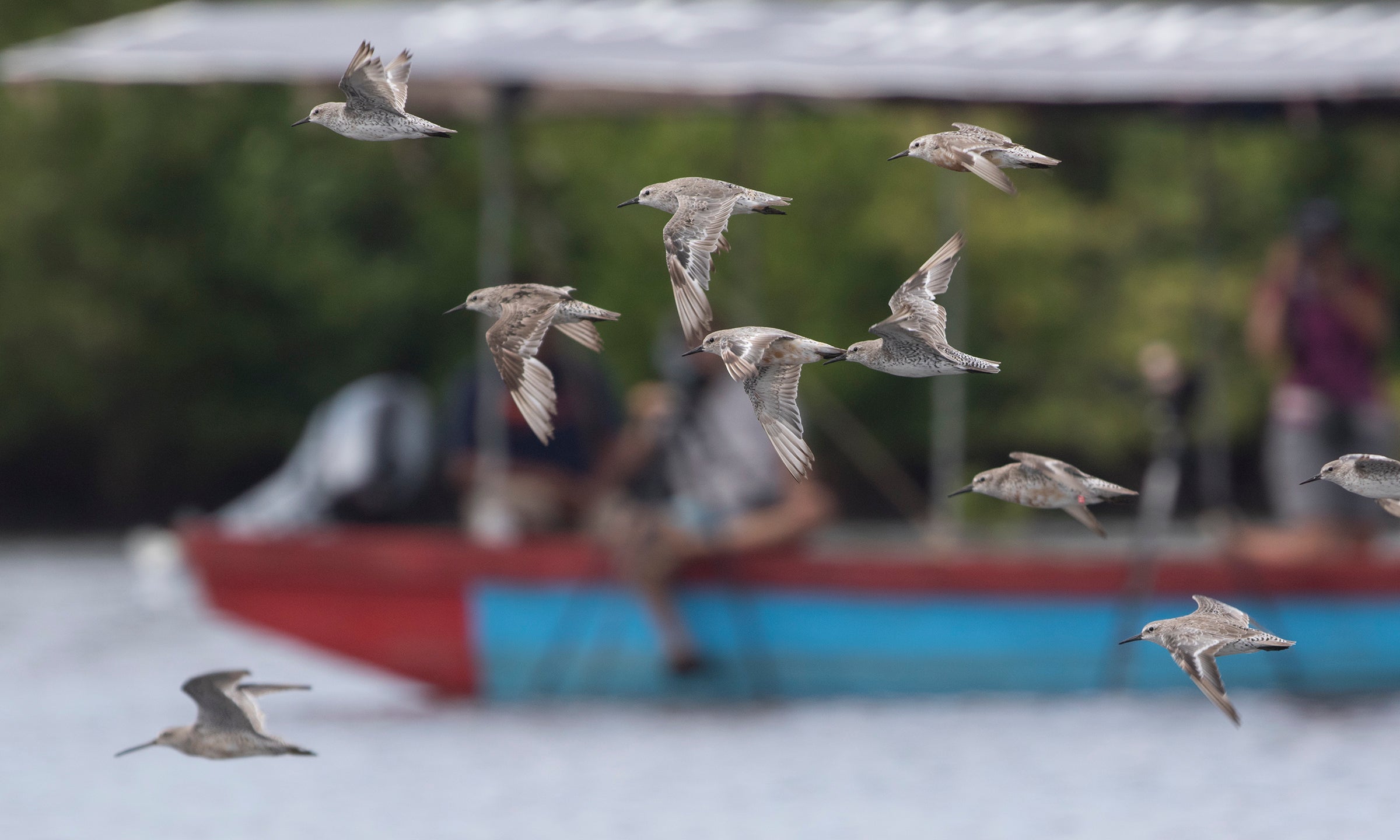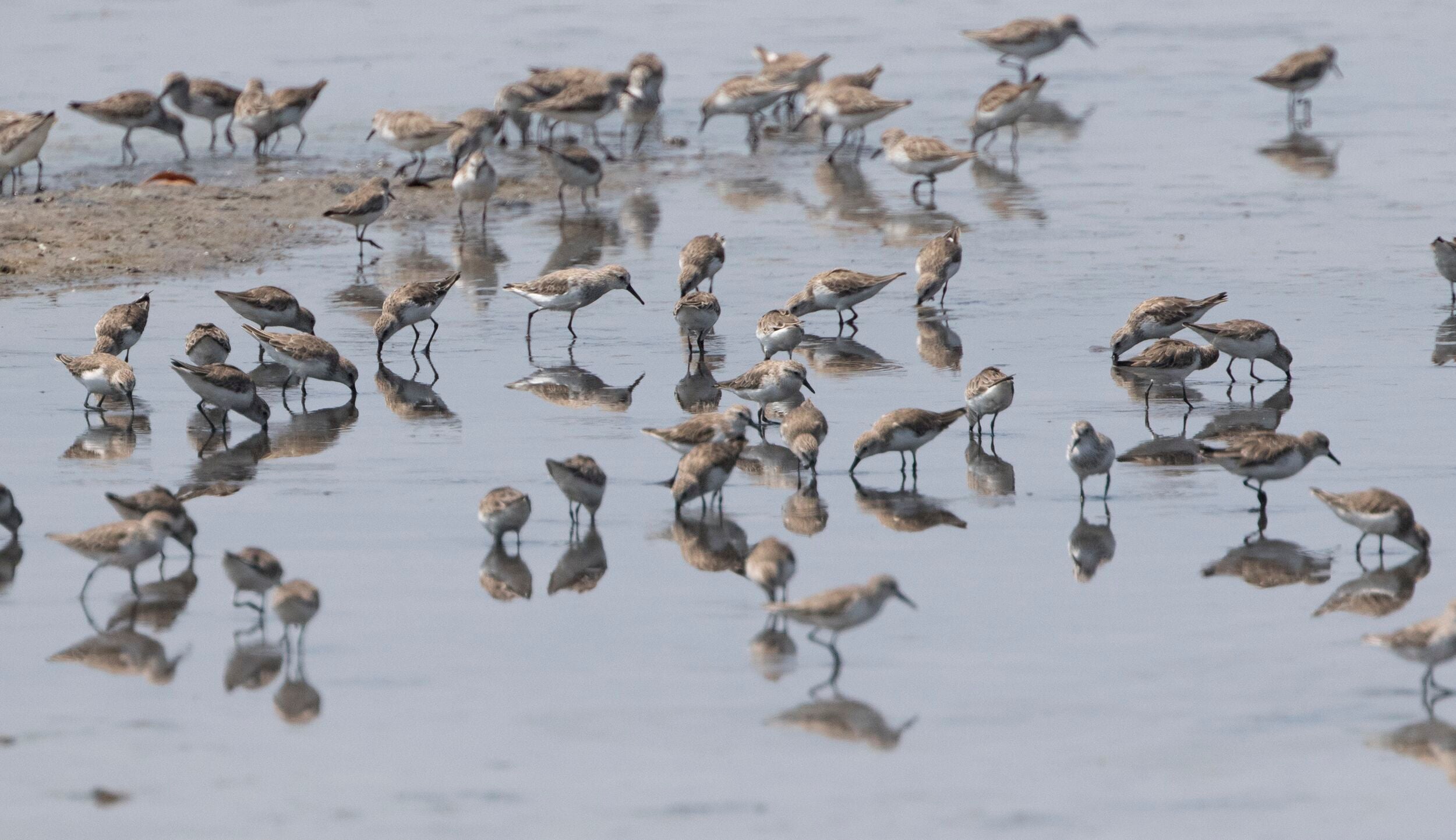New Hope for Migratory Shorebirds
A report from Guatemala
By Cayte Bosler on April 5, 2020

WCS biologists watch Red Knots fly by as they move from roosting sites to productive mudflats to forage. Credit: Zak Pohlen
Up and down the Pacific Coast of Guatemala, the sea's edge gives way to volcanic sand, and zones of life that change with the tides and currents. Come dawn, at a low ebb; the receding water exposes mudflats like clay tablets dimpled with the zigzagging footprints of shorebirds. Sandpipers scurry across the soft earth by mangroves, flying in from their high-tide roosts to feed. Pelicans huddle by the dozens, commanding the scene with their iconic bills and gregarious nature. We glide through the estuary in our slender wooden boat to survey the waves of morning birds and drift close to flocks before they flush—the sky a commotion of wings and wails.
In our day-to-day lives, we see birds as a mere detail in our scenery, in our backyards, in our parks, backdrop. But here, in the tidal flats and mangrove forests, their presence is commanding. We are the visitors.
This protected estuary and lagoon of El Paredón, a small beach town with a trickling of tourism, sits in the middle of Sipacate-Naranjo National Park. It offers sanctuary to local and migratory shorebirds who depend on the refuge of mudflats, mangroves and estuaries, and the bounty of fish, crustaceans and other critters. Local species use this habitat year-round; travelers stop over to recuperate.

A flock of Western and Semipalmated Sandpipers foraging on recently exposed tropical mudflats, a stark contrast to their arctic tundra breeding sites. Credit: Zak Pohlen
My field guide, a 28-year-old Guatemalan biologist named Varinia Sagastume, works across her country to introduce conservation management for shorebirds in farming and aquaculture communities. Her work is supported by the Coastal Solutions Fellows Program at the Cornell Lab of Ornithology and by the Wildlife Conservation Society (WCS) through their Arctic and Guatemala programs.
More:
https://blogs.scientificamerican.com/observations/new-hope-for-migratory-shorebirds/

